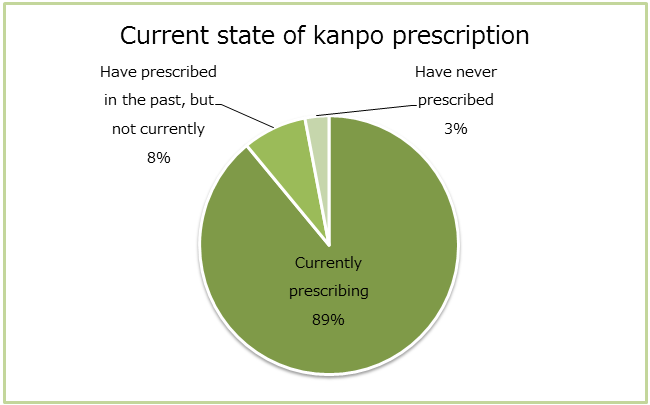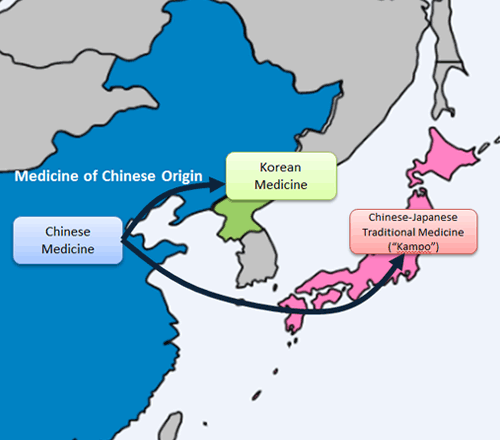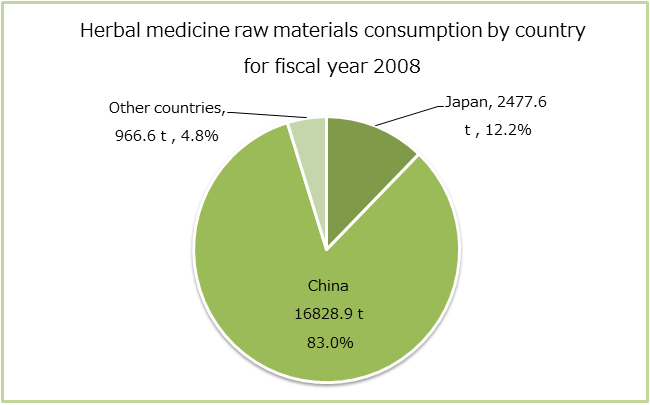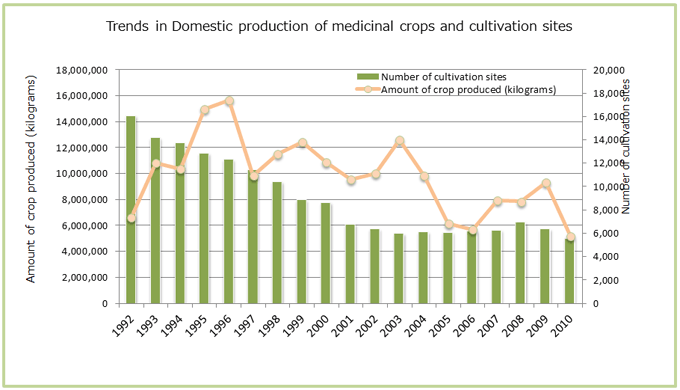What is kampo
Kampo in our everyday life
Kampo is all around us as we live our everyday life. We can buy kampo from a nearby drug store, and there are various kinds of food that has natural medicinal effect that are consumed in our daily meals.
Also, Japanese doctors can treat clients with traditional methods using herbal medicine as well as the most advanced western type methods. In a survey conducted by JKMA(Japan Kampo Medicines Manufacturers Association) at 2011, 89% of the doctors said that they prescribe herbal medicine for their clients in a daily basis. This means that doctors are providing us with the most updated western medicine while at the same time, using herbal medicine to treat our illness when thought appropriate.
This is why we can proudly say that in Japan, a fusion of western and traditional medicine is practiced, resulting as a new approach to medical treatment in our time.
So how had kampo come upon us, and what are the problems and possibilities they posses?

data retrieved from :
2011 Japan Kampo Medicines Manufacturers Association“Survey on actual prescription of herbal medicine (quantitative)”
What is kampo
Kampo, also called Chinese herbs, chinese medicine, Sino-Japanese traditional medicine, is a traditional medical practice method that originally came from China and developed into its present state in Japan. The original method had also travelled into Korea at the time as well, which has evolved, and now called a “Traditional Korean medicine”.Although Japanese kampo medicine, Chinese medicine and korean medicine has the same roots, their diagnostic methods, prescribing methods and medical systems are all different.

The history of Kampo
It is said that the very beginning of Kampo was when Chinese medicine was brought into Japan bypassing the korean peninsula in the 5th Century.
Missionaries that Prince shotoku of Japan sent abroad officially brought back chinese medical science in the 7th century.
After that, a temple was built in Nara along with many offerings including food with medicinal effects as a memorial service for Shomu Tenno(Emperor)’s death.
Medicinal practice shifted from what was only targeted towards the aristocracy class, to a practice affordable for the people of all classes soon after the Muromachi Era started.
But as the Edo era started, Japan took a national isolation policy which blocked all contacts with countries that include China. This is why Kampo medicine in Japan developed by integrating Japanese climate and cultures with the traditional Chinese medical practices during this period.
From the middle of the Edo period, medicinal practices from the Netherlands(Ranpoigaku) was introduced to Japan. This was when the traditional Japanese medical practices started being called “kampo” to distinguish one from the other.
Doctors from this time learned both methods, and a study called eclecticism, which includes both medicinal practices was developed by them.
As the Meiji era started, modernization and “policy of increasing wealth and military power”(Fukokukyouhei) by the Meiji Government was introduced, which meant western medicine was emphasized compared to the traditional methods. This was when a bill that announced doctoral exam would only question about western medicine passed in the congress, which literally pointed out death for Kampo medicine.
But in 1910,a Kampo medical Doctor Keijuro Wada wrote a book that cried out for more attention for the brilliance of kampo, and in 1927 Kyushin Nomoto wrote a book that systematically explained how Kampo can still be useful to us. These works gradually made a enormous effect on the people, and contributed to the existence and restoration of Kampo medicine.
Problems on Kampo nowadays
Nowadays, many people appreciate Kampo in our everyday lives, but it is little known that Kampo is actually highly dependent on imported goods. We only grow 12% of Kampo herbs that we consume, and the rest 80% of herbs are imported from China. Japan had been growing herbs used for Kampo medicine in the past, but due to the advance of aging society especially in the agricultural segment, the amount of production within the country has been decreasing.
Recently, it is said that the consumer needs for herbs is growing in China as well, and a few herbs are already restricted from export for the demand in China is increasing as well.
In order to keep kampo as a part of our life, we must consider finding a stable supply source of our herbs.
※)出所:渡辺賢治『日本人が知らない漢方の力』祥伝社新書 2012年
cited from : Kenji Watanabe, “The power of Kampo that Japanese don’t know” published by Shodensha

retrieved from :
Survey report on raw material crude drug usage (in 2008), on 2011/7/15 Japan Kampo Medicines Manufacturers Association
graph made by :
Kampo Industralization Consortium

Retrieved from :
日本特産農産物協会(Japan Special Association of Agricultural Products) Survey Report of productivity of special agricultural products (2013 December)
graph made by :
Kampo Industralization Consortium
Kampo made from Nature
Kampo medicine consists of many types of natural resources such as plants, minerals and animal parts. The ratio and combination of each ingredients creates different types of effects. Combinations and ratios that create the more effective, or whether if it is toxic to the body has been studied over a long time by prescribing it to many people in the past. Repeating this cycle until today has made the present state of Kampo medicine.
It is now officially recognized by institutions as well, and 148 types of Kampo medicine has been added on NHI price listing as a medicine included as a part of health insurance, and can be bought from medical stores.
Kampo medicine is a combination of many types of natural ingredients. As mentioned above, changing the ratio of the same combinations of ingredients means that it will have different effects.
For example, A kampo called “Keishito” and “Keishikashakuyakutou” uses the same five ingredients; Keihi, Shakuyaku, shoukyou(ginger), taisou and kanzou. But if you double the amount of Shakuyaku in “Keishito” which is said to be good for the beginning of a cold, you end up with “Keishikashakuyakutou”which has an good effect on stomachache. Also, if you are to add glutinous starch syrup to “Keishikashakuyakutou” a “Shoukenchuto” is made, which treats children who were born with frail health.
What is “Shoyaku”(crude drug)
Shoyaku is a form of is any naturally occurring, unrefined substance derived from sources such as plant, animal, minerals, processed into a form of medicine to be preserved, transported and to adjust effects.
As for plants, the parts that can be used for shoyaku differs; roots, leaves, tree barks, seeds or the tree itself. As for minerals, Gypsum that contains calcium carbonate are used, and for animal parts, cicada shells and oyster shells are used as well.
